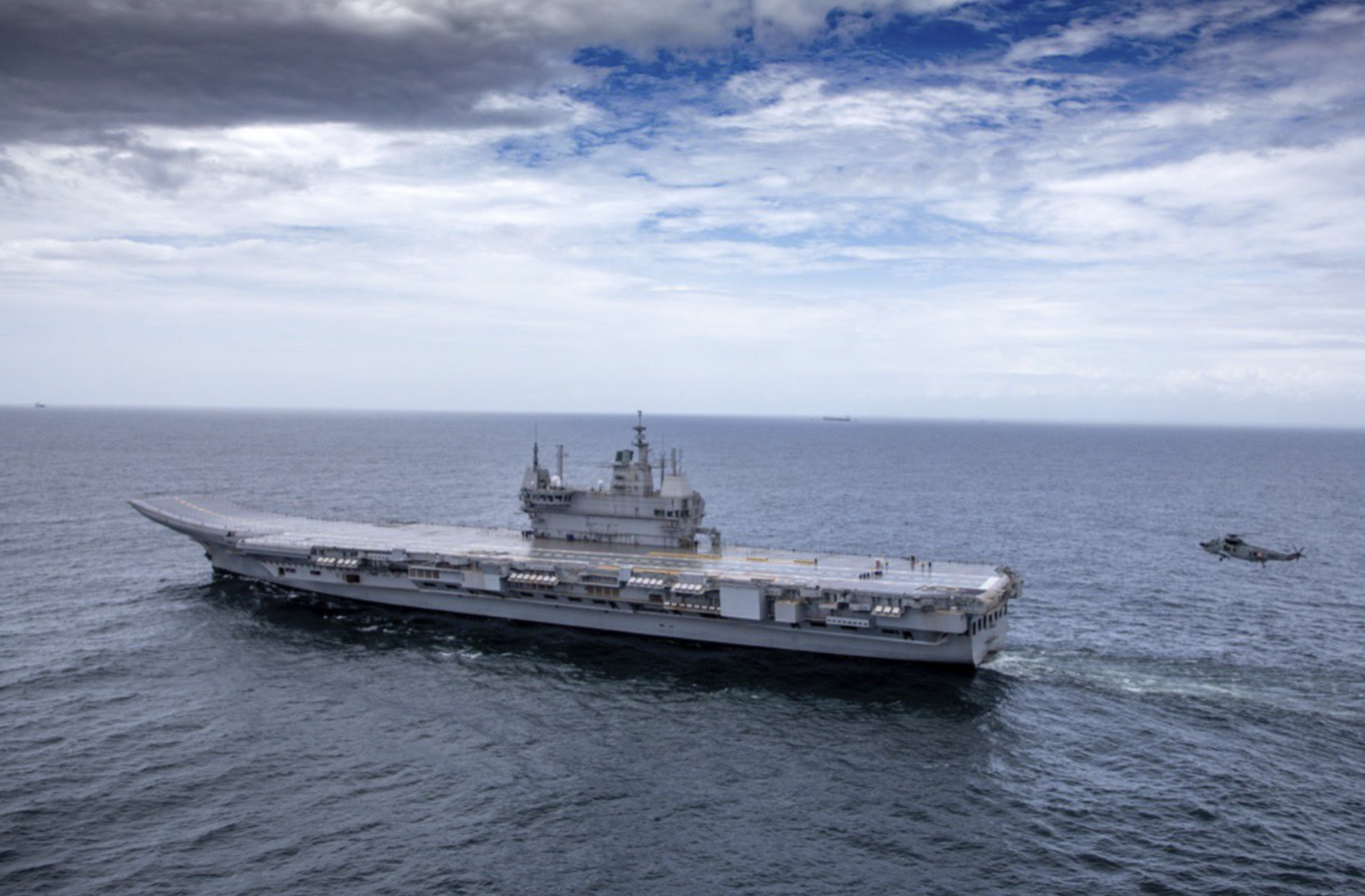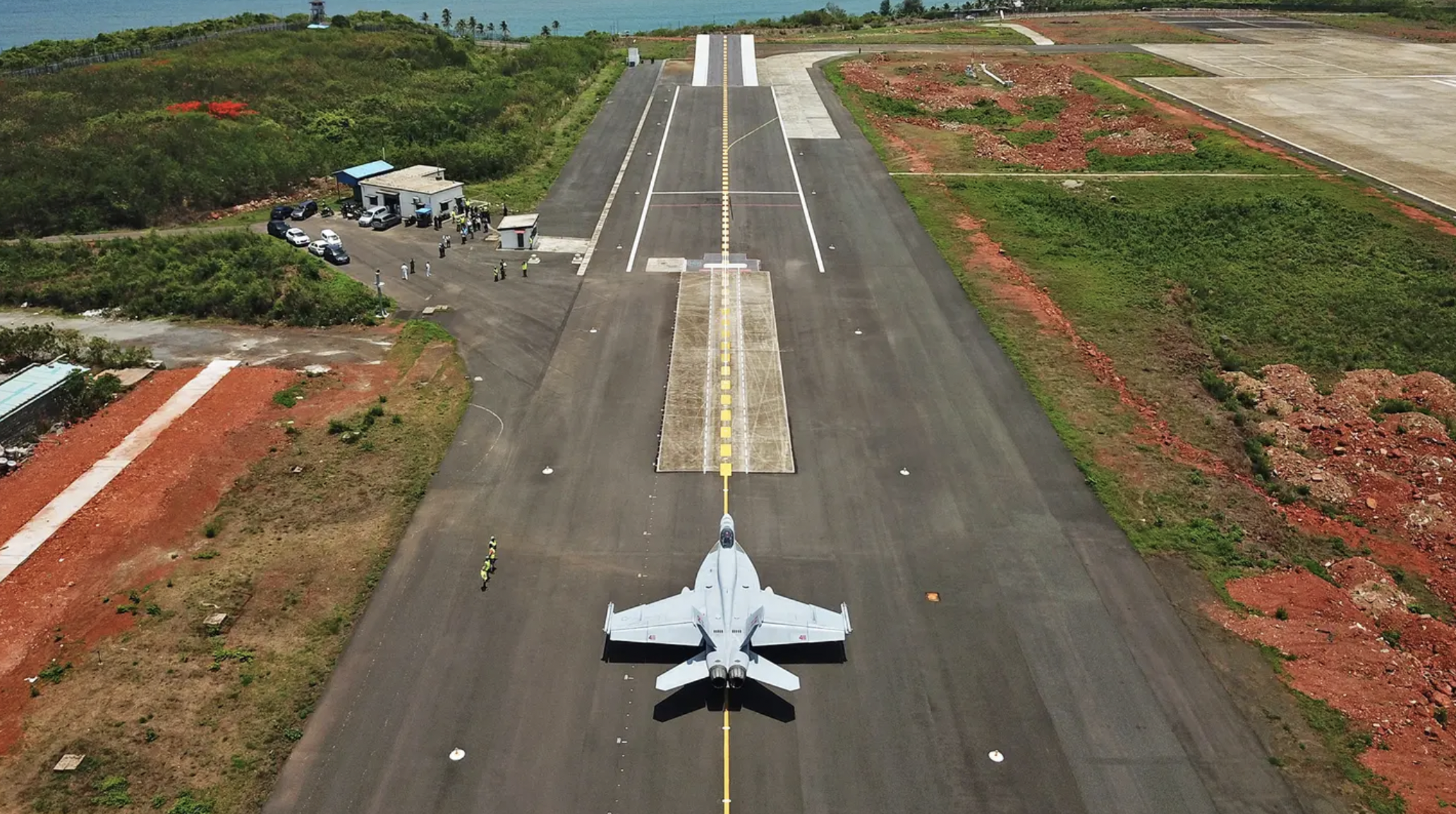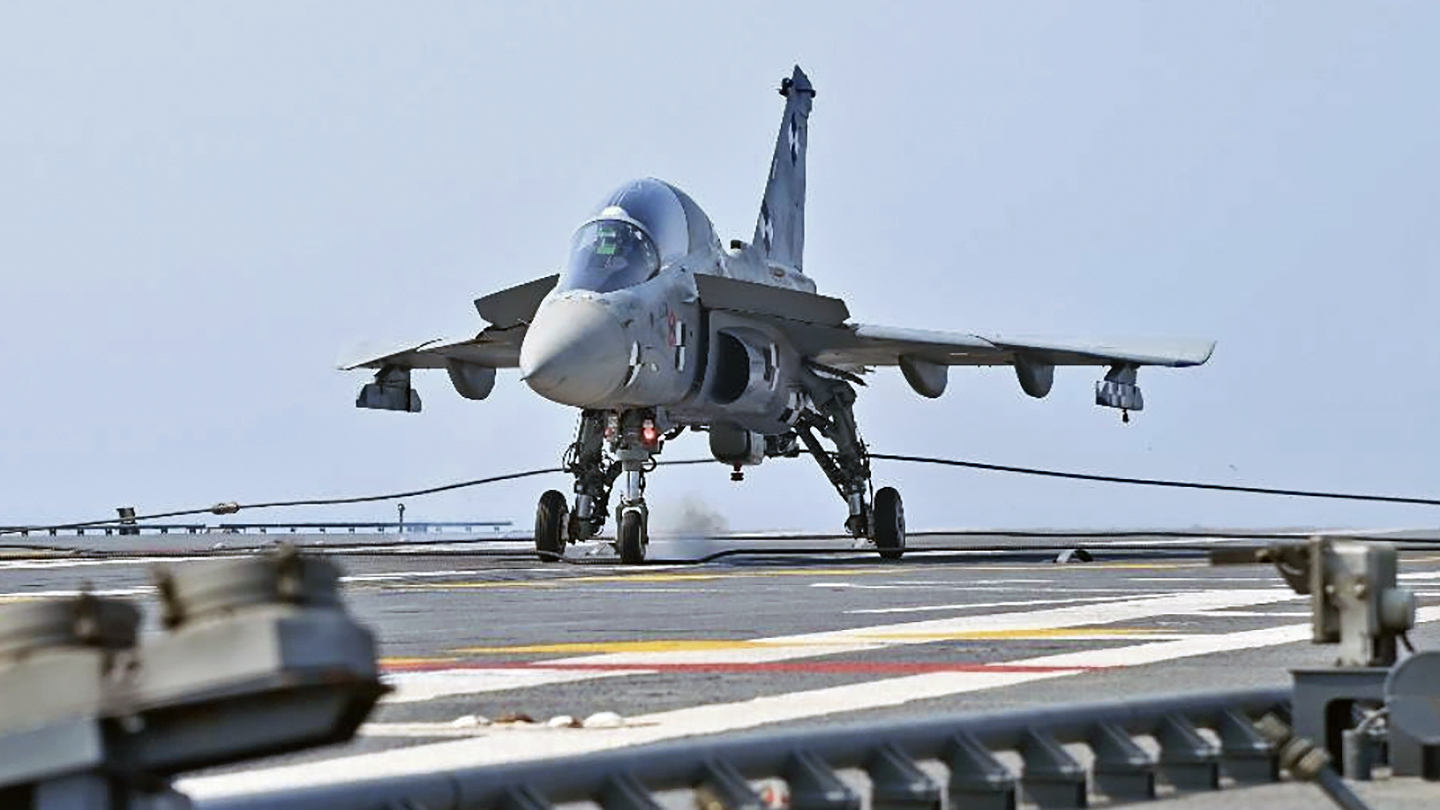In a first-of-its-kind event, an Indian-made fighter jet has landed aboard an Indian-made aircraft carrier — the new INS Vikrant, which began at-sea trials back in August 2021, as you can read more about here, and which was commissioned last September.
While today’s arrival of the HAL Light Combat Aircraft (LCA) Navy version on the deck of the carrier is a significant moment for the Indian Navy and the country at large, hopes of fielding a production version of the jet have now been superseded by a highly ambitious plan for a Twin Engine Deck Based Fighter, or TEDBF, and plans for another new carrier are well advanced.

With naval test pilot Commodore Shivnath Dahiya at the controls, NP-2, the second prototype of the LCA Navy, trapped aboard the Vikrant today, while it was underway in the Arabian Sea. The jet then took off from the carrier’s ‘ski jump’ ramp, marking the first time a fixed-wing aircraft of any kind had completed a full cycle aboard the flattop. While the LCA Navy has operated from a carrier deck before, the warship involved on that occasion was the INS Vikramaditya, originally built in the Soviet Union before being transferred to India.
NP-2 will now begin a series of deck trials aboard the Vikrant, proving its ability to operate combat jets, as well as the helicopters that have been embarked in the recent past. Previously, it was planned that all these trials would be completed around mid-2023, paving the way for the carrier to enter full operational service.
The Vikrant is equipped for short take-off but arrested recovery, or STOBAR operations. This means the warship lacks catapults. Instead, it launches its fixed-wing aircraft off a ski-jump over the bow, before recovering them using arrester wires.

Even before the LCA Navy first went to sea, however, the Indian Navy went cold on the idea of a carrier-based version of the lightweight fighter. The jet is now being used for a technology demonstration program, in which it will help de-risk the Indian Navy’s future homegrown carrier fighter, to be developed under the aforementioned TEDBF initiative.
At this stage, despite a model shown at the Aero India exhibition in 2021, it’s still very much unclear what the TEDBF will look like and whether it will inherit any of the DNA of the LCA, a version of which is also being developed for the Indian Air Force as the Tejas. With the air force version, a spiral development path plans to add successive new features as well as enhanced performance, ultimately leading to the Tejas Mk 2 with much-expanded capabilities.
Unlike the LCA/Tejas, however, the TEDBF is intended to have a twin-engine, rather than a single-engine configuration and is also expected to feature a canard-delta planform.
At this stage, the TEDBF is still a long way off, with any production version of the multirole fighter not expected to appear until the 2030s.
In the meantime, therefore, the Vikrant will likely first operate the Mikoyan MiG-29K/KUB Fulcrum fighter jets that currently serve aboard the Vikramaditya. Indeed, an example of the Russian-made deck fighter also conducted a debut landing and takeoff aboard the Vikrant today.
The Indian Navy acquired 45 examples of the MiG-29K/KUB, in two batches, although the jets have had several accidents and, moreover, have been criticized for a range of issues including engine malfunctions and poor operational availability.

Plans to introduce another new carrier fighter — effectively an interim type until the TEDBF becomes available — are now well underway, under the Multirole Carrier Borne Fighter (MRCBF) program. This will see an order placed for either the Dassault Rafale M or the Boeing F/A-18E/F Super Hornet Block III, with examples of both of those now having undertaken trials in India, including from Indian Naval Station Hansa in Goa, which has a land-based ski-jump ramp. You can read more about the ski-jump trials for the Super Hornet here and here. Unconfirmed rumors suggest that the Rafale could now be the front-runner for MRCBF, perhaps aided by the fact that the land-based version of the jet is already operated by the Indian Air Force.

Once a decision is made in the MRCBF head-to-head competition, New Delhi is expected to order between 20-30 of the chosen fighters to operate from the Vikrant. Previously, it had been reported that as many as 57 new jets could be purchased, although the momentum gathering behind the TEDBF program has seen this number cut back.
There have, however, been questions as to whether either the Rafale or Super Hornet can actually properly operate from the Vikrant in its current configuration. As we have explored in the past, the small elevator dimensions on the Vikrant might make regular operations very difficult, at least without significant modifications.
All these carrier fighter developments are also in process to provide the air wing for India’s next carrier, the Indigenous Aircraft Carrier 2, or IAC-2, which will be named INS Vishal, and which is planned to be significantly bigger than the Vikrant, at around 65,000 tons, compared to 40,000 tons for the earlier warship.
Slated to be completed in the 2030s, Vishal should be able to embark both the winner of the MRCBF competition as well as the home-grown TEDBF fighter. The carrier will be better suited to operate these kinds of aircraft, trading the ski-jump found on the Vikrant for a catapult-assisted takeoff but arrested recovery (CATOBAR) arrangement, perhaps even making use of an Electromagnetic Aircraft Launch System (EMALS), after the United States approved the transfer of this technology to India.
There remain questions over India’s capacity to complete the IAC-2 in the kind of timescale projected, especially as the less-ambitious Vikrant, or IAC-1, suffered a string of major delays and cost overruns.
Ultimately, the TEDBF program is probably even more high-risk than the IAC-2 from which it’s expected to operate. Developing an advanced new home-grown fighter from scratch is a seriously complicated and expensive endeavor and India’s results with the LCA Tejas have so far been mixed, to say the least. While the Tejas Mk 1 is in operational service with the Indian Air Force, the fact that the program was launched in the early 1980s and a full 32 years passed before deliveries commenced, does not necessarily bode well for the TEDBF.

Furthermore, developing a combat aircraft for carrier operations brings many added complications.
The TEDBF will require landing gear able to absorb deck landings, as well as the requisite catapult launch and arrester gear for the IAC-2, in addition to the ability to conduct ski-jump takeoffs for when it goes aboard the Vikrant. In general, the airframe will need to be more robust for carrier operations than other fighter jets of comparable size, adding mass to the design, although the planned canard-delta layout should help optimize carrier recovery.
Perhaps even more critical is the economic factor. With a need to replace an original total of 45 MiG-29K/KUBs, and potentially a less urgent requirement to supersede 20-30 MRCBF aircraft, the total number of TEDBFs that the Indian Navy might buy appears strictly limited. And, as Saab has found out with its proposed navalized Gripen, for example, finding export customers for a carrier-based fighter is a very difficult business proposition. Selling a version of the jet to the Indian Air Force would seem a remote prospect, with that service having its own next-generation fighter program underway.

It would not be a huge surprise if the idea of an all-new TEDBF design falls by the wayside and there are likely to be compelling arguments to either buy more MRCBFs or to revert to the original plan for an operationalized LCA Navy, perhaps with an aircraft that draws more heavily from the air force’s forthcoming Tejas Mk 2 model. That, however, would still retain a single engine, which the Indian Navy, for now at least, appears to have discounted as a viable option.
As it stands, the Vikrant is likely to sail, in the near term at least, with an air wing primarily made up of the less-than-satisfactory MiG-29K/KUBs, supplemented by Kamov Ka-31 Helix airborne early warning helicopters, and HAL Chetak plane-guard and utility helicopters. However, modernization of the rotary component is also underway with the introduction of the MH-60R Seahawk anti-submarine warfare and anti-surface warfare helicopter, which will provide a major upgrade over the current Ka-28 Helix anti-submarine helicopters.
Undoubtedly, the Indian Navy’s aircraft carrier arm has assembled considerable experience over many years. It’s now at something of a turning point, however. The addition of the Rafale or Super Hornet will bring a much-needed overhaul of its combat air capabilities, including active electronically scanned array (AESA) radar and more advanced weapons, although questions remain about how compatible the new aircraft will be with the Vikrant.

In the meantime, there will undoubtedly be eyes on China, India’s great regional rival. China’s own aircraft carrier plans are taking shape at a frenetic pace, with a second homegrown carrier now completed and work on an advanced, stealthy carrier fighter, as well as critical support aircraft, at a very advanced stage. However many more carriers China aims to field, it’s clear that it’s now some way ahead of India in terms of carrier building, and that trend is likely to continue.
For India, the fortunes of the country’s proud aircraft carrier force look set to be intertwined with two hugely ambitious projects: an all-new carrier fighter as well as the advanced warship from which it’s planned to operate. Time will tell how realistic these plans are.
Contact the author: thomas@thedrive.com
